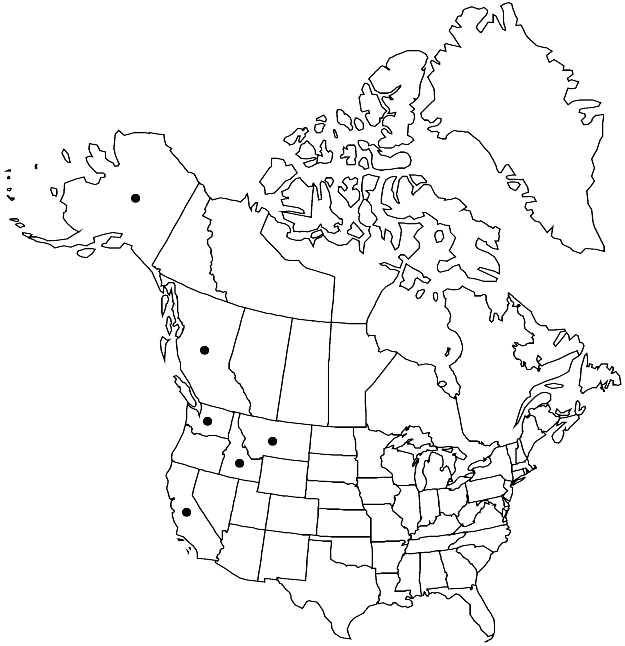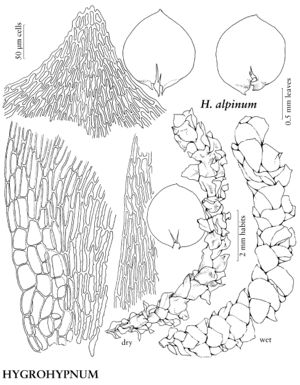Difference between revisions of "Hygrohypnum alpinum"
Hedwigia 43: 194. 1904.
imported>Volume Importer |
imported>Volume Importer |
||
| Line 54: | Line 54: | ||
|publication year=1904 | |publication year=1904 | ||
|special status=Illustrated | |special status=Illustrated | ||
| − | |source xml=https:// | + | |source xml=https://bitbucket.org/aafc-mbb/fna-data-curation/src/2e0870ddd59836b60bcf96646a41e87ea5a5943a/coarse_grained_fna_xml/V28/V28_424.xml |
|genus=Hygrohypnum | |genus=Hygrohypnum | ||
|species=Hygrohypnum alpinum | |species=Hygrohypnum alpinum | ||
Latest revision as of 21:35, 5 November 2020
Plants soft, pale yellow, brownish yellow-green, or bright green. Stems to 5 cm, leafy throughout, irregularly branched; hyalodermis absent, epidermal cells small, walls thick, similar to subadjacent cortical cells, central strand hyaline to brownish. Leaves appressed-imbricate and plane or erect-spreading and convoluted-ruffled parallel to long axis of leaf, straight, sometimes secund, spreading when dry or moist, oval or orbicular, sometimes broadly ovate, concave, (1–)1.2–1.6(–1.8) × (0.9–)1–1.7(–1.8) mm; margins plane, entire, less often finely denticulate or serrulate in apex; apex broadly acute to short-apiculate; costa slender, usually double and short, sometimes single and 2-fid; alar cells irregular to rectangular, walls thin, usually hyaline, region clearly differentiated, ± rectangular, long axis parallel to margins; basal laminal cells shorter, longer, or similar to medial cells, walls usually thicker, hyaline; medial cells short-fusiform to linear-flexuose, 35–60(–64) × (4–)5–6 µm; apical cells shorter; marginal cells similar to medial cells. Sexual condition autoicous; perichaetial inner leaves linear-lanceolate to linear, plicae 0–4, deep, margins coarsely serrate at apex, ecostate, costa faintly single, or double, few apical laminal cells coarsely papillose abaxially by distally over-riding end walls. Seta yellow-red, orange-red, or red, 0.8–2 cm. Capsule with endostome cilia rudimentary or absent.
Habitat: Irrigated emergent, acidic rock in montane streams
Elevation: moderate elevations (200-900 m)
Distribution

B.C., Alaska, Calif., Idaho, Mont., Wash., Europe.
Discussion
Hygrohypnum alpinum is disjunct from Europe to western North America. Broadly ovate to regularly orbicular leaves coupled with a rectangular group of thin-walled, enlarged, irregular to rectangular alar cells make the species distinctive. The convoluted ruffling of the leaves and the abaxial papillae of the inner perichaetial leaves are additional distinguishing traits. The stems are ascending to erect. The leaves often have excavated alar cells and are sometimes folded at the apex.
Selected References
None.
